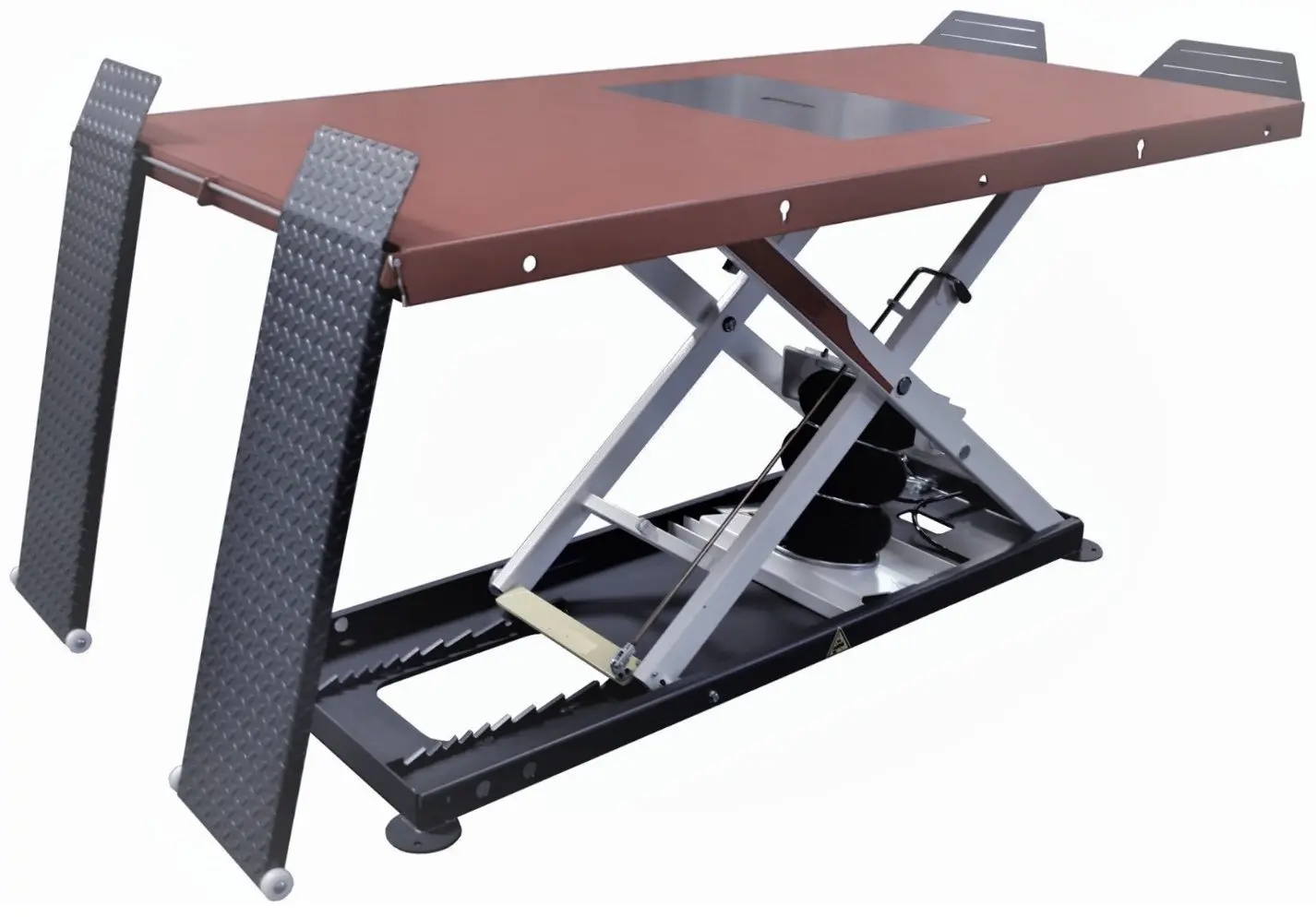Why Are Air Springs Essential for Automotive Lifting Platforms?
Automotive lifting platforms demand stability, precision, and vibration-free motion. Traditional lifting systems often fall short. If you’re seeking a cleaner, quieter, and safer solution — air springs may be exactly what you need.
Air springs provide advanced vibration isolation, improve safety, and enhance lifting precision in automotive platforms. Their low-maintenance design, adjustable air pressure, and superior vertical motion control make them a smart replacement for hydraulic and mechanical systems.
Let’s explore how air springs elevate automotive lifting platforms — in every sense of the word.
What Makes Air Springs Ideal for Lifting Platforms?
Air springs are engineered to deliver consistent vertical support without mechanical friction or hydraulic leaks.
Air bladder lifting systems use compressed air to lift vehicles smoothly and stably. Compared to conventional lifting cylinders, they require less maintenance and provide longer operational life.
Unlike hydraulic lifts, air-powered scissor lifts don’t suffer from oil leakage, thermal inefficiency, or inconsistent pressure response. These systems use a compressed air elevation system that allows rapid adjustment and long-term reliability, even under heavy loads.
How Do Air Springs Improve Safety and Stability?
Vibration and imbalance during lifting can pose serious safety risks.
Vehicle hoist air springs act as both stabilizers and shock absorbers, isolating low-frequency vibrations that often go unchecked in traditional lifts.
By minimizing ground-borne vibration and sudden load shifts, air springs ensure a safer working environment for operators. Their vertical motion stabilizer feature keeps platforms steady even under asymmetric loading conditions.
How Do Air Springs Improve the Precision and Safety of Vehicle Lifting Operations?
Precision is critical when working with high-value or fragile vehicles.
Air springs create a smooth and linear lift motion, improving positioning accuracy and reducing the chance of damage or operator error.
Precision load balancing actuators distribute load evenly across the platform. This is especially important in automotive workshops dealing with different vehicle sizes and weights. Air suspension also helps to hold the position without drifting over time.
What Design Features of Air Springs Make Them Ideal for Vertical Motion in Lifting Tables?
It all comes down to structure.
Air springs feature an enclosed rubber bladder, which expands and contracts vertically under air pressure. There’s no metal-on-metal contact — which reduces noise and wear.
The core advantage is that air bladder lifting systems can respond instantly to air pressure changes, maintaining perfect vertical alignment. These systems can be integrated into modular or custom scissor lifts with ease.
Are Air Springs Customizable for Different Platform Designs?
Yes — and that’s a major selling point.
Whether for a compact garage lift or a heavy-duty industrial hoist, air springs are adaptable in size, load rating, and control configuration.
Adjustable pneumatic support systems allow fine-tuning to meet unique vehicle lifting needs. Air spring suppliers like Songjiangflex offer tailored solutions for automotive OEMs, aftermarket workshops, and custom machinery builders.
In What Ways Do Air Springs Outperform Hydraulic Systems in Vehicle Lifts?
Less mess, less maintenance, more precision.
Unlike hydraulic systems, air springs don’t leak oil, don’t overheat, and don’t require complex seals or pumps.
Heavy-duty lifting airbags can operate with simple compressed air inputs, while still delivering strong lifting forces. They are also immune to cold-weather thickening or thermal expansion, ensuring consistency in diverse conditions.
How Do They Compare to Mechanical Alternatives?
Mechanical springs are limited in adaptability and comfort.
Air springs provide a smoother, quieter ride — especially valuable in workshop environments where vibration can affect tools or measurement systems.
They also enable more precise load control. A pneumatic lift suspension setup allows workers to lift and lower vehicles in controlled increments — ideal for maintenance, alignment, and detailing tasks.
Can Air Springs Extend the Lifespan of Mechanical Lifting Components?
Yes — significantly.
By reducing shock, vibration, and structural stress, air springs help protect other components in the lift system.
Over time, components like platforms, bearings, and guide rails suffer less wear. A low-maintenance lift cylinder powered by compressed air can dramatically lower your total cost of ownership.
What Maintenance Is Required for Air Springs?
Minimal — especially compared to hydraulic systems.
Air springs require regular air pressure checks and occasional surface inspections but have no fluid changes or seal replacements.
With no lubrication systems to monitor, the maintenance cycle is simple. Many automotive users run air-powered scissor lifts for years without significant downtime.
What Role Do Adjustable Air Pressure Levels Play in Efficiency?
A central one.
Air pressure can be precisely adjusted to match vehicle weight, lift height, or operational speed.
Adjustable pneumatic support lets operators maintain balance and safety, even with uneven vehicle loads. With feedback-controlled compressors, these systems respond dynamically to real-time conditions.
How Do Temperature and Load Variations Affect Air Spring Performance?
Very little — if properly engineered.
Rubber air springs are designed with temperature-tolerant materials and flexible diaphragms.
Whether you’re in a cold garage or hot workshop, air springs perform consistently. Their ability to compensate for load variations ensures platform stability and prevents sag or drift.
Why Are Low-Frequency Vibration Isolation Characteristics Crucial?
Because not all vibration is obvious — or harmless.
Low-frequency floor vibrations from nearby equipment can destabilize lifts or compromise precision work.
Air springs are naturally suited to low-frequency damping. When integrated with a vertical motion stabilizer system, they isolate noise and movement that traditional springs or hydraulics often transmit.
How Do Automotive OEMs Benefit from Air Springs in Workshop Solutions?
The gains are both operational and reputational.
Air springs help OEMs build quieter, safer, more precise service platforms — reducing warranty claims and technician fatigue.
OEMs integrating air springs into their vehicle hoist systems also improve energy efficiency and lifecycle value. These benefits align with modern goals for lean production and sustainability.
Summary
Air springs transform automotive lifting platforms into high-precision, low-maintenance, and safe workstations.






